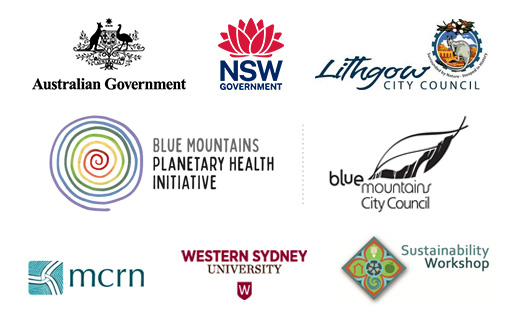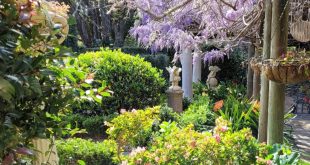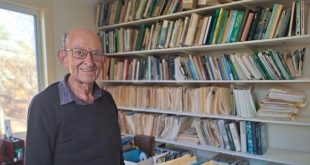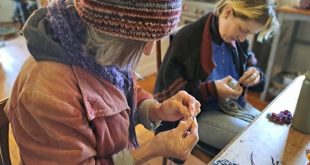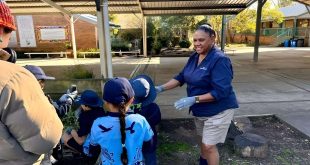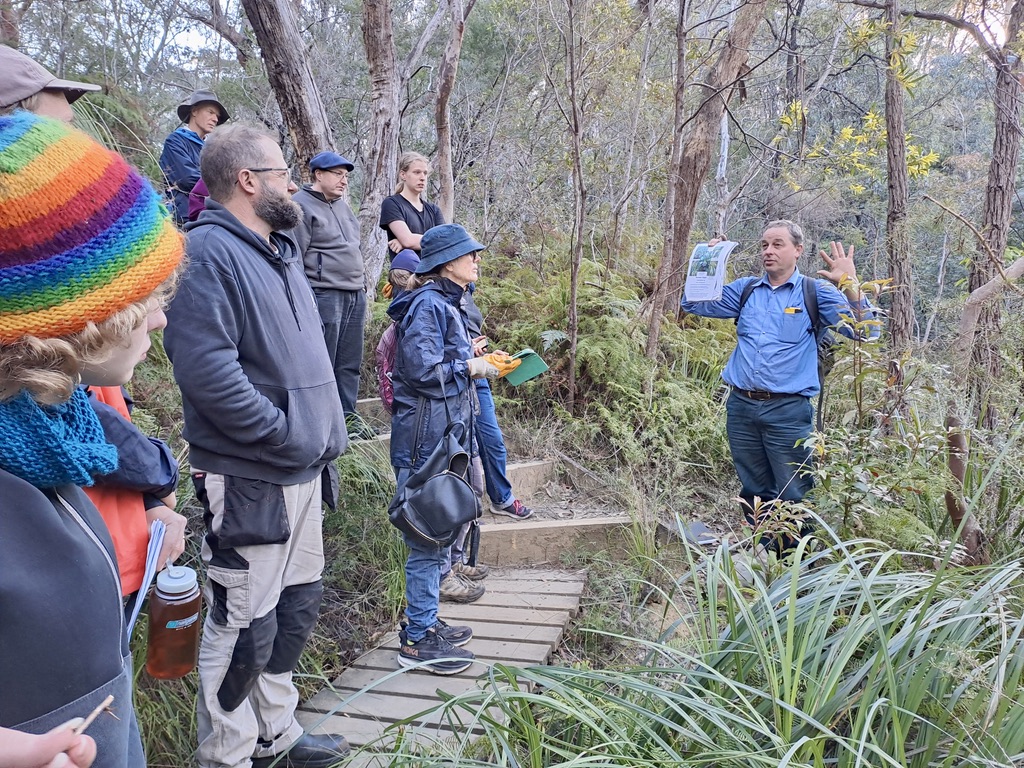
Nathan Summers educating the Weed Walk and Talk group about local vegetation.
Story and photographs by Belle Butler
Bushcare’s bimonthly Weed Walk and Talk in Hazelbrook is attracting both young and old to learn more about protecting our bushland. Getting rid of weeds supports biodiversity and reduces fire risk by maintaining healthy native bush with less fuel. Volunteers are also joining the group to meet people and do something for the environment.
Key Points:
- Bushcare is a great way to gain and share knowledge about protecting our bushland.
- Weeds have a significant impact on biodiversity and fire risk in the Blue Mountains. Bushcare groups help to mitigate immediate and downstream effects.
- Participation from younger volunteers ensures the environment, and our communities, will continue to be protected into the future.
Share this article:
While wrangling a bush of Zebra Grass, a couple of Bushcare volunteers discuss the broad impacts of the weed as well as the best approach to hoist it out. One volunteer is a newcomer, the other is an old hand. They alternate wielding a mattock and tugging at the invasive grass, chatting when they are not catching their breath.
The old hand, Paul, who also teaches horticulture at TAFE and runs his own garden maintenance business, tells the newcomer, David, that the main aim is keeping sediment out of the creek, so they try to disturb the soil as little as possible. He explains that urban runoff has caused weed infestation problems downstream, and David asks questions, soaking up the information.
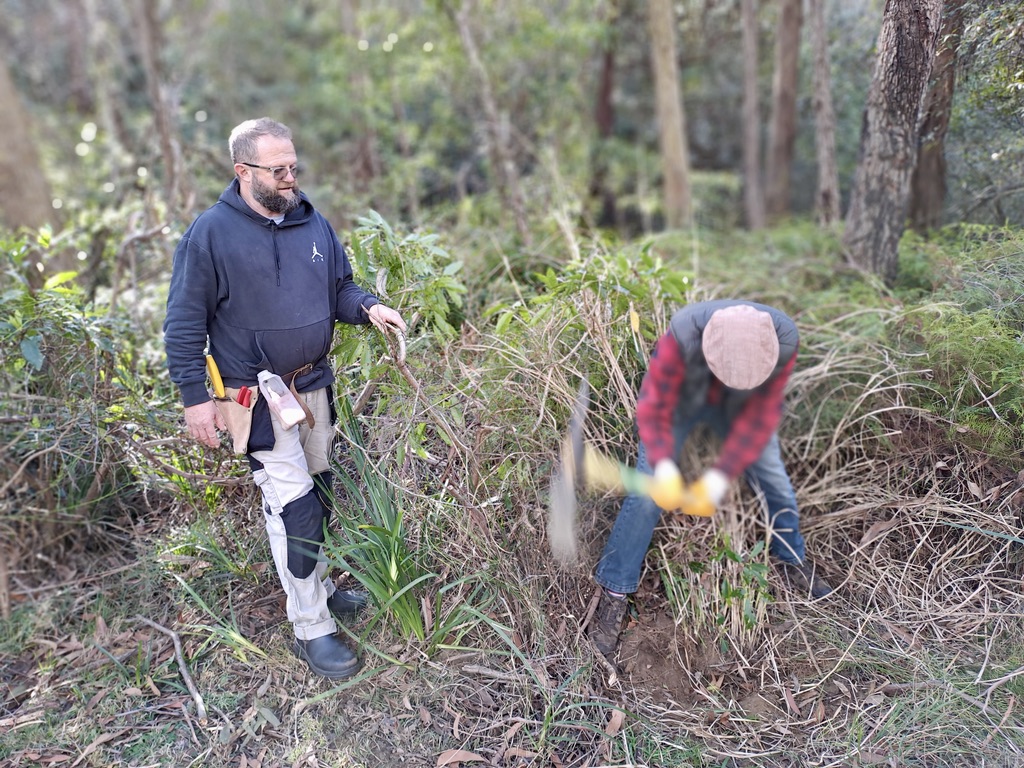
Paul and David battling Zebra Grass.
I witness this kind of exchange over and over again among a spectacularly mixed demographic of volunteers attending the bimonthly Bushcare ‘Weed Walk and Talk’ event in Hazelbrook. The event is held in different locations each time, and on this particular day, the focus area is Horseshoe Falls.
This is an area that reveals the impacts of urban development. Weeds have been given a helping hand by urban runoff, disturbed soils and the clearing of native vegetation. Their proliferation at the upper catchment has significant impacts downstream, well into the bush beyond our backyards.
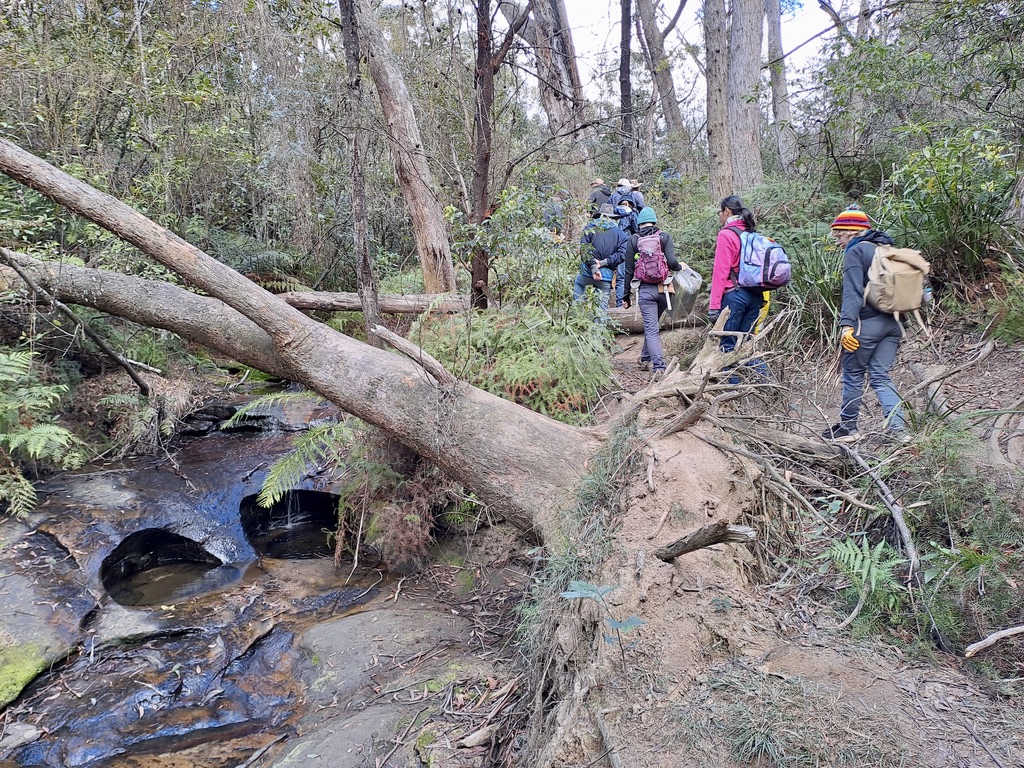
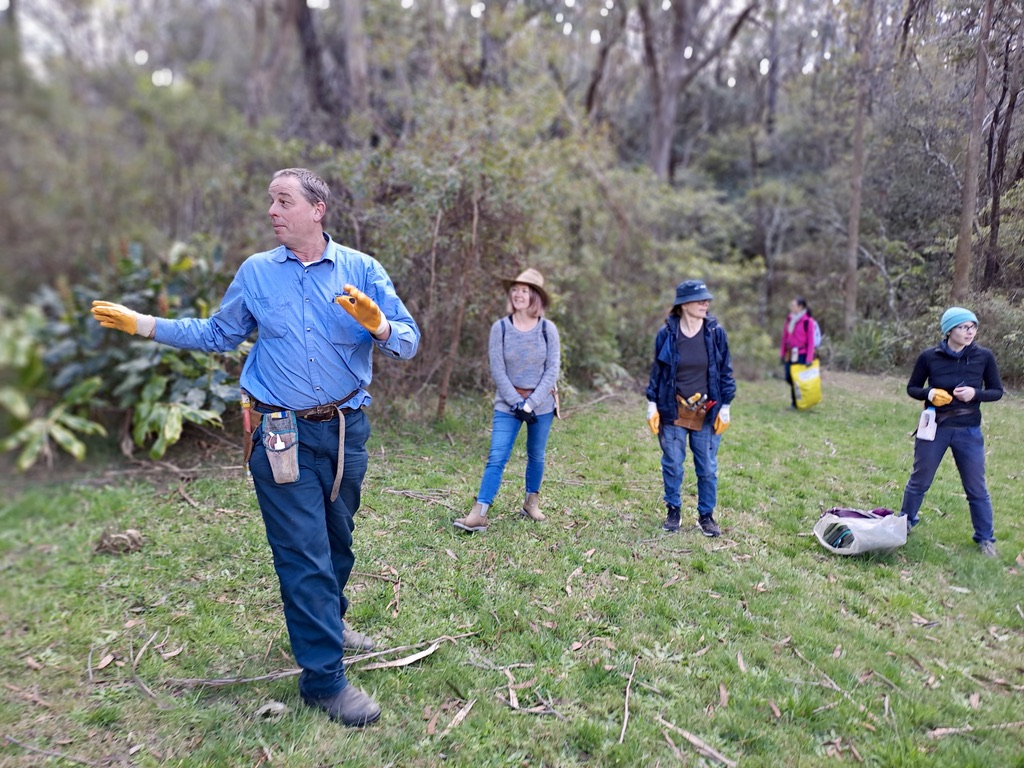
L: Volunteers walking up to the weeding site; R: Nathan giving some instructions on what to focus on.
Still battling the Zebra Grass, Paul explains this issue to David and to me: “All waterways are highways for weed infestation, and with all of us spread out and living on the ridgeline, it has a significant impact on the bush. Being spread out, our surface area impact is greater.”
This single conversation seems to satisfy David’s reasons for attending the event: to learn a bit more about weeds and weed identification in order to help him manage his own backyard, and to help improve the health of the bush. “The bush is the main asset of the Blue Mountains. It requires love and care, maintenance and management,” David says, adding that he’s keen to gain further knowledge so that he can spread that knowledge.
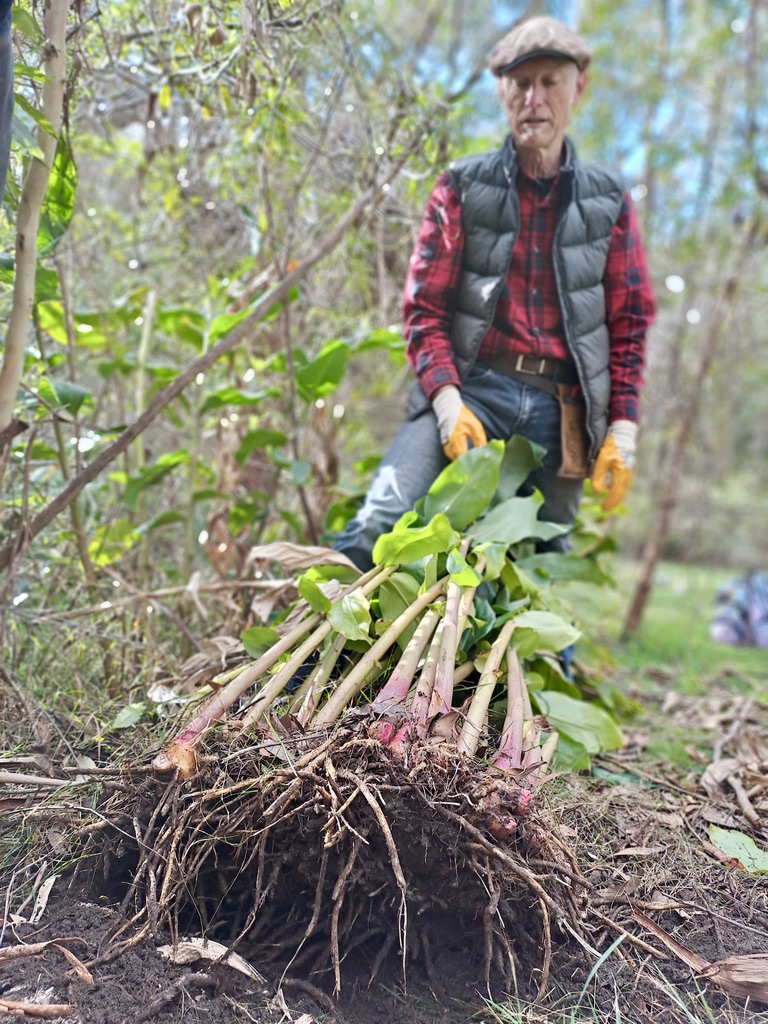
David having some success with ginger weed.
Knowledge-sharing seems to be a major benefit of attending the event. Speckled through the bush above the trails to Horseshoe Falls are small groups of volunteers, bent down with their tools in the soil, giving and receiving advice about the task at hand or other areas of common interest. Host, Nathan Summers, moves about between them, offering handy tips, titbits of local information or demonstrating effective methods to manage the weeds. “There are things about the creatures, the plants, the rocks and the landscape features which are both interesting and also useful to us, and there are also the people in a place, and then the stories that go with all of this,” he tells me. “People want to know about these things and it also helps to understand your place in the world a little better and appreciate things more.”
“One of the things about Bushcare is that it is people working with the local bushland and getting things done in places that often the land manager, such as Council, otherwise would not have the resources to undertake. People involved with Bushcare are also the eyes and ears of the site and will often see things happening in places that Council otherwise may not be aware of. This is a double up benefit.”
Nathan has been involved in Bushcare since 1998. He has experience in natural resources and bush regeneration and has a particular interest in botany and plant uses. “Running a Bushcare group is like conducting a symphony,” he says, “getting different moving parts working in order to get the momentum happening.”
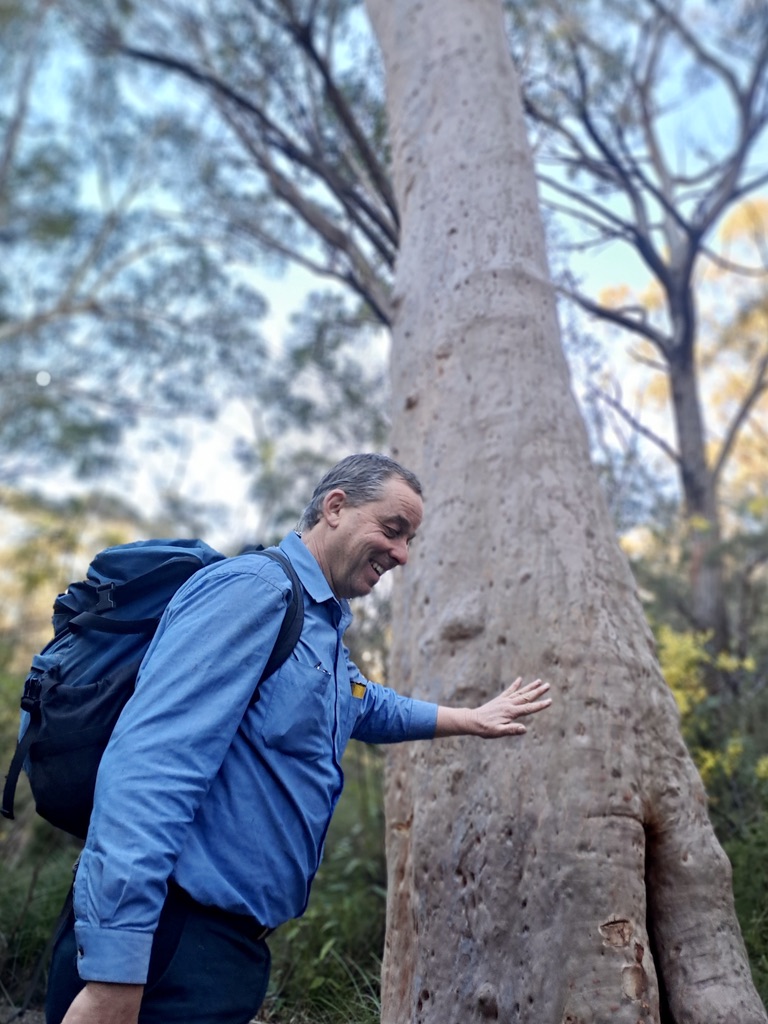
Nathan Summers, host of Bushcare’s Weed Walk and Talk bimonthly events.
I can see what he means as I watch him happily roam from group to group and successfully orchestrate a significant dent in the upper catchment weeds. As I also wander from group to group I notice a difference in the turnout of this event as compared to other volunteer events I’ve recently attended: the demographic.
Generally there is a higher percentage of older adults and this has been a topic of conversation and concern at such events: how do we get younger people involved so that this work can continue when the older volunteers need to step back?
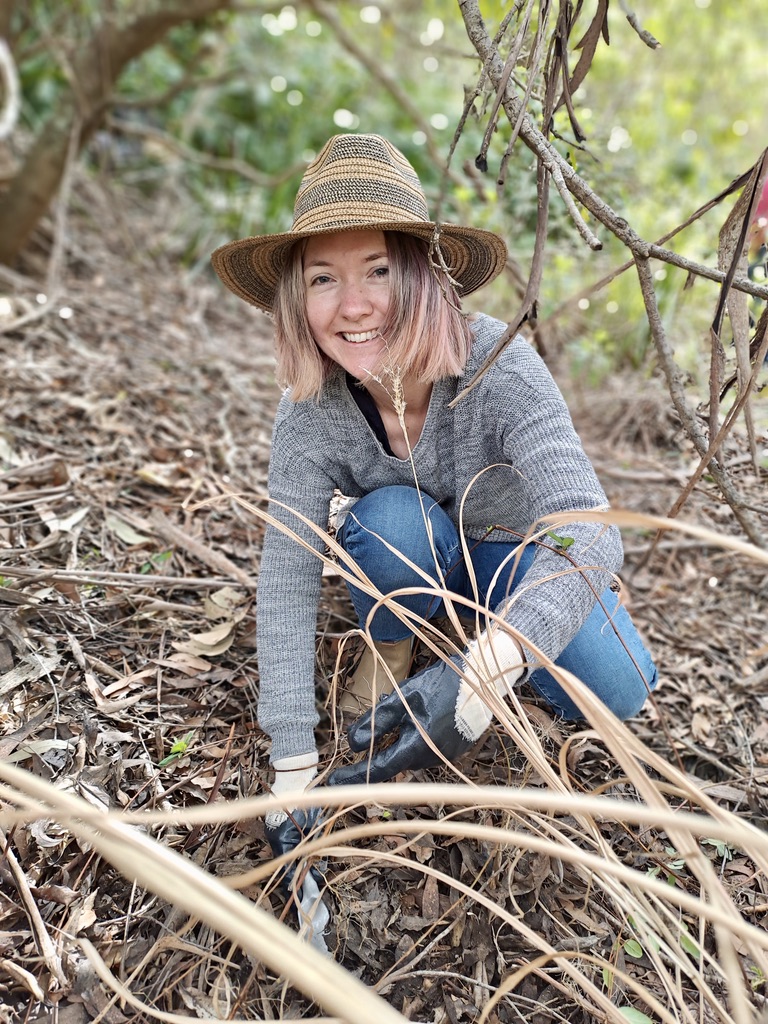
New volunteer, Cian, joined the group in order to meet people in the area and do something for the environment: “I feel personally passionate about helping out the environment, so I go to Bushcare to help reduce the invasive weed problem. In my personal life I also have solar panels and an EV to be less reliant on the grid and dirty fossil fuels.”
Bushcare’s Weed Walk and Talk bucks the trend I’ve witnessed and makes me wonder why this event has attracted such a mixed cohort of volunteers. Paul sites the added bonus of the ‘walk and talk’ element at the end of the weeding session as a possible attractive perk.
But when I ask one of the younger volunteers, 17-year-old Ashwin, the answer is pretty straightforward: “My mum got us into it and then it just felt good to help out. Getting rid of weeds helps with fires when they come through by maintaining healthy native bush with less fuel. And if it’s just older people doing it, then what happens when they stop?”
Interestingly, recent statistics on volunteering demographics reflect Ashwin’s demonstration of altruism in his cohort. Informal volunteering stats show the highest participation rate coming from people aged 24-39 (38.8%), followed closely by people aged 15-24 (36.5%).
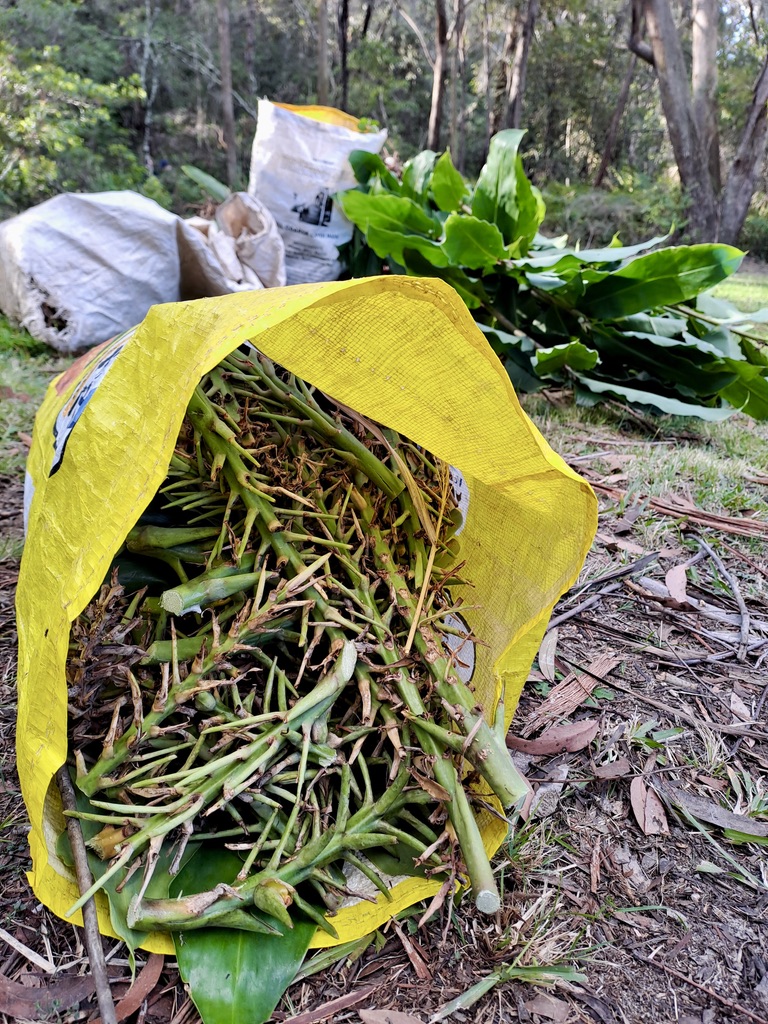
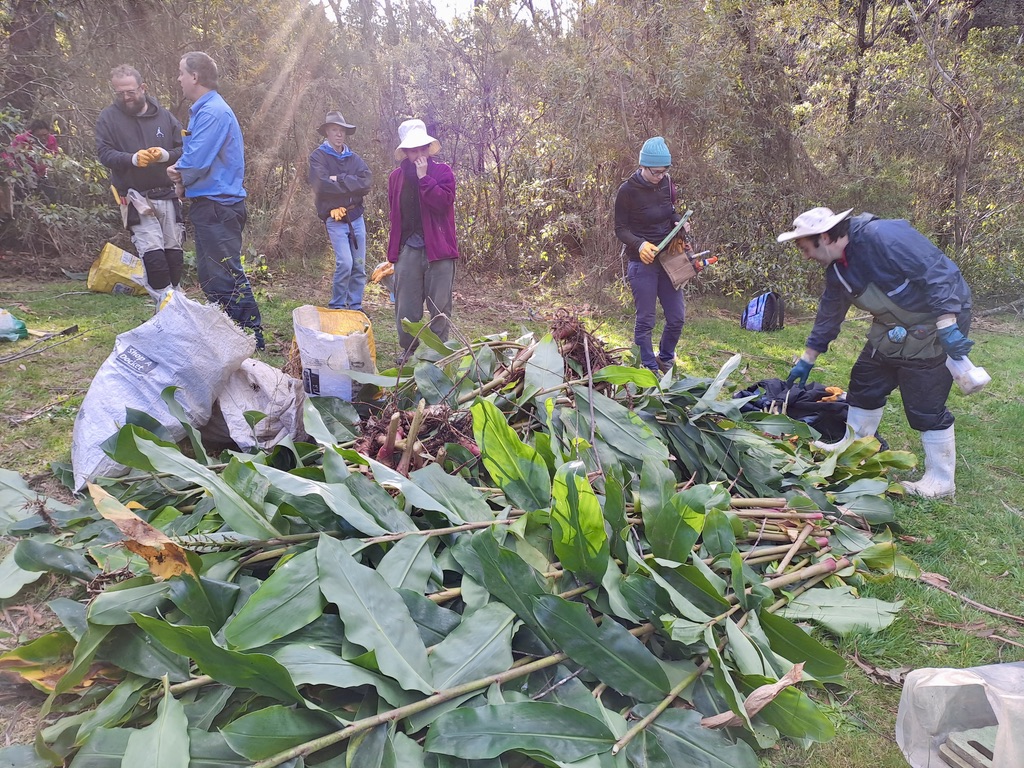
L: Satisfying evidence of a successful afternoon. R: A pile of weeds followed by tea and biscuits.
Stats aside, the ‘walk and talk’ part of the event is clearly a perk. As the weed pile grows and the tea and biscuits emerge, volunteers huddle and chat before following Nathan on a walk to Horseshoe Falls.
Nathan tells me he loves teaching and guiding: “The whole point is getting it (acquired knowledge) out there.” And this is made obvious by his enthusiasm for sharing local information during the walk. He teaches us how to identify an Apple Eucalypt, finds some Mountain Pepper for us to taste, points out Coral Ferns that indicate the location of a hanging swamp, and shows us where to return in the night if we would like to see glow worms.
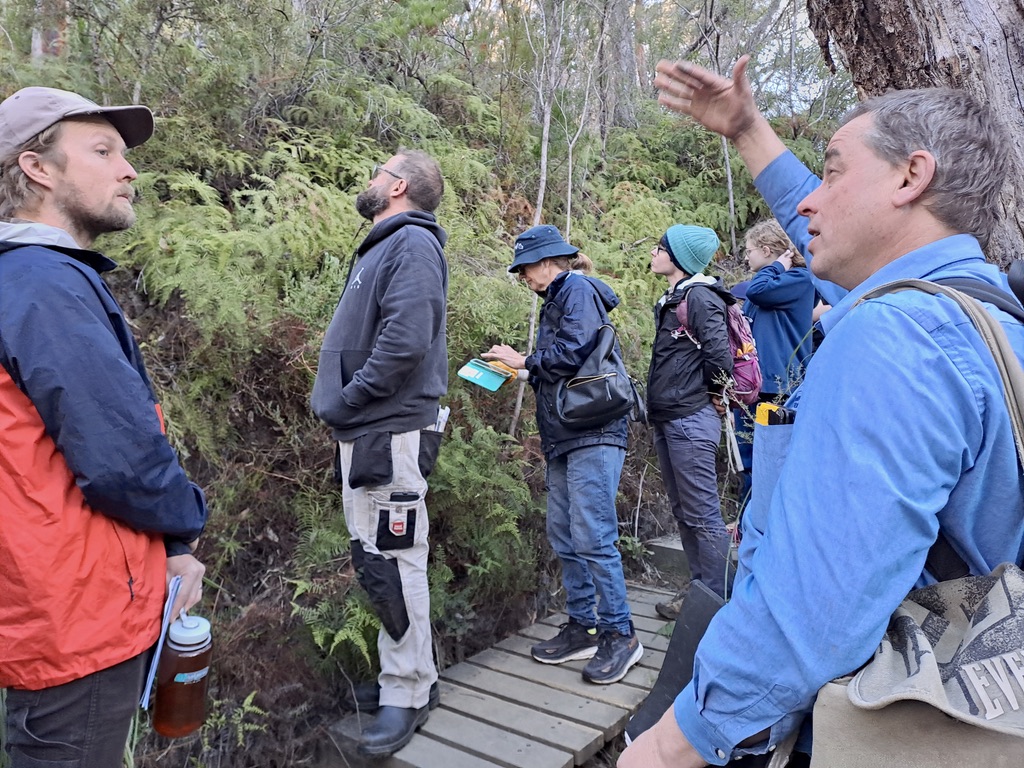
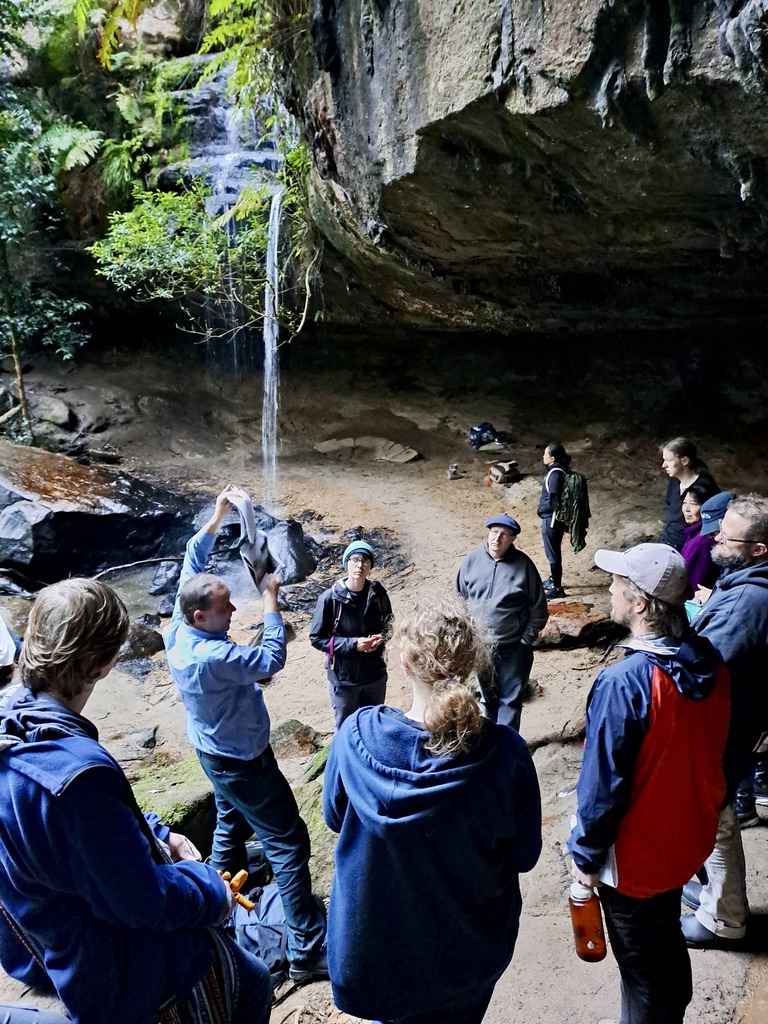
L: Nathan explaining how coral fern is an indicator of a hanging swamp; R: At Horseshoe Falls.
During the walk a young volunteer, barely a teenager, shares his knowledge about the geology of the area, others pipe up about their experience in bush regeneration, and everyone, including Nathan, stops to listen and learn. The guided tour becomes a collective sharing of experience and knowledge. I suspect this kind of respect for all and openness of the group is also to thank for the high attendance at the event. “Everyone knows things, and has some area of interest and expertise, and it is always good when different people contribute where possible. It is part of teaching and learning,” says Nathan.
As we return to our cars I ask a new volunteer if he thinks he’ll return. “Oh definitely,” he says without hesitation.
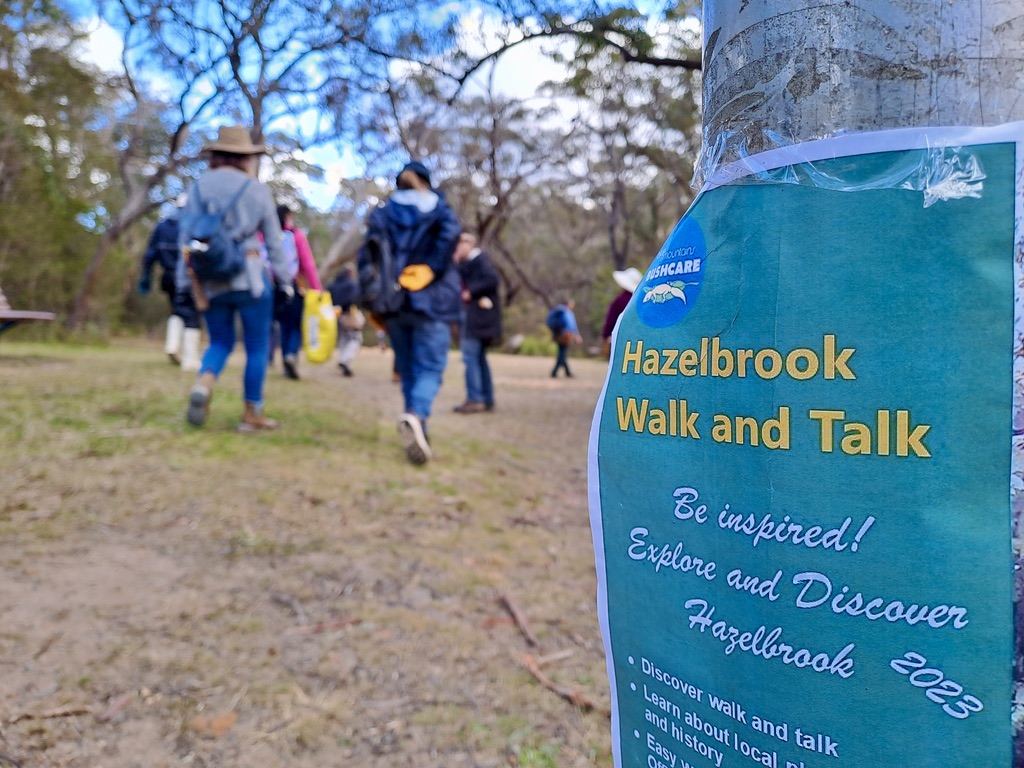
Take Action:
- To attend any of the upcoming Weed Walk and Talk events please contact Nathan Summers: NSummers@bmcc.nsw.gov.au
- Get involved in Bushcare or Landcare in your area. Find out more here
Share this article:
This story has been produced as part of a Bioregional Collaboration for Planetary Health and is supported by the Disaster Risk Reduction Fund (DRRF). The DRRF is jointly funded by the Australian and New South Wales governments.
